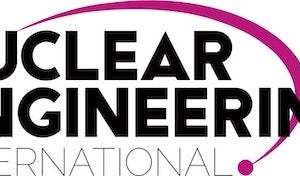
In October 2022, Argentina’s nuclear utility Nucleoeléctrica Argentina S.A. (NA-SA) contacted CONUAR SA to develop remotely controlled tools to solve a mechanical issue located inside the Atucha II Pressurised Heavy water Reactor (PHWR).
The mechanical issue identified related to one of the four supports located in the lower plenum of the Reactor that had become released from its fixation and moved from its position. The Atucha Nuclear Power Plant is located in Lima, about 100 kilometres from Buenos Aires on the Parana de Las Palmas River. Construction of the second unit at the site first began in 1982, stopped between 1994-2006 and commercial operations ultimately began in June 2014. The reactor has a gross nameplate capacity of 745 MWe.
By the time of the contract award CONUAR, a company owned by Comisión Nacional de Energía Atómica and Perez Companc, already had extensive experience in manufacturing tooling for working inside the moderator tank located within the reactor pressure vessel. CONUAR offers remotely controlled tools for working and welding parts and components inside operating reactors, with the first set of tools supplied to NA-SA in 1990 for unit 1 at Atucha. Those tools included a cutting tool, a flattening tool and a gripping tool. NA-SA still continues to use improved versions of those tools, which are also supplied by CONUAR.
However, the lower plenum is an area of the reactor pressure vessel that has much more limited space in comparison with the moderator tank. It is therefore far more difficult to access and no work or intervention had been carried out in the lower plenum previously.
By that time, NA-SA had also already assessed that with radioactive fuel elements in place it would take approximately six years to disassemble all the relevant components and fuels to provide clear access to the problem area, remove the loose separator, and then reassemble all components and reload the fuels. This assessment was based on the three years NA-SA had required for assembly of the reactor internals and the first core loading. NA-SA thus concluded that such a long-term operation would have been unaffordable.
Facing that scenario, NA-SA formed several working groups and decided to manufacture tailor-made tools.

Expediting welding repairs
CONUAR was subsequently contracted for the manufacture of one those sets of tooling that consisted of: a mechanical-gripping tool and a vacuum-gripping tool both of which had been designed by NA-SA. The plant owner/operator also delegated the design and manufacture of two welding tools to CONUAR. All of the tools were to be remotely controlled.
Working conditions in the work area of reactor lower plenum included being submerged in heavy water at ~ 0.8 bar, at a temperature of some 60°C and located 14 metres below the reactor cover. Access would be provided through four holes of 11 cm diameter each.
The two Flux-cored arc welding (FCAW) welding tools were intended to perform a pair of welds on each of the three remaining supports which were still fixed to the reactor lower fill body plate in their correct positions. The objective here was to improve their fixation to prevent those remaining supports from moving from their positions in the future.
The CONUAR scope of supply for the welding tools included: hydraulic, pneumatic and mechanical actuators, welding heads, a column to guide the hydraulic and pneumatic line access, the filler metal and the gas supply, connections to the remote motion control board (both hydraulic and pneumatic) and a remote human machine interface (HMI) control panel to control the welding process.
All processes were tested and functionally validated on mock-up facilities in both CONUAR and NA-SA tailor-made facilities. In addition, the procedures, welding test coupons and welders were formally qualified to ensure the intervention would be a success and gaining the relevant approvals from the Argentinian Nuclear Regulatory Authority (ARN). Subsequently, all of the necessary repair welds were performed on site by NA-SA with an exclusive CONUAR assistance team and controlled by NA-SA remote video-cameras.
The gripping and vacuum handling tools were part of a set of tools used by NA-SA for extracting the loose support.
Led by NA-SA, the detailed plans and subsequent actions to repair the lower plenum support within the reactor pressure vessel allowed Atucha NPP to be returned to service in just 10 months from the out of service date. This is a significant improvement on the six years initially estimated by NA-SA. Furthermore, the necessary tasks were completed at an expenditure one twentieth of that required if the conventional solution had been implemented.






